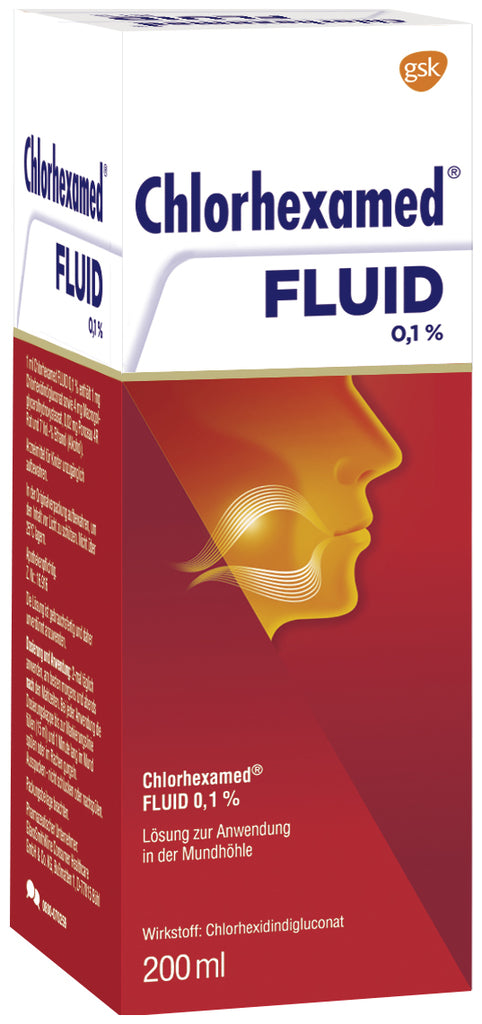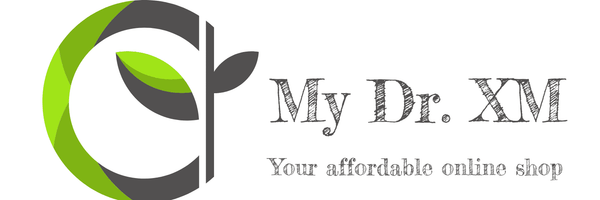Chlorhexamed
Chlorhexamed Fluid 0.1% active mouth and throat antiseptic - 200 ml
Chlorhexamed Fluid 0.1% active mouth and throat antiseptic - 200 ml
受取状況を読み込めませんでした
Chlorhexamed fluid is a surface-active mouth and throat antiseptic (disinfectant) with a broad spectrum of action and long-term effect against bacterial pathogens and somewhat weaker activity against fungal diseases. Rinsing with Chlorhexamed fluid effectively treats bacterial infections in the mouth and throat. Chlorhexamed fluid is used to treat and prevent bacterial infections in the mouth and throat and is indicated
- to reduce and prevent bacterial deposits on teeth (plaque)
- for the treatment of simple to purulent inflammation of the gums (gingivitis)
- for the treatment or prevention of infectious diseases of the periodontium and their sequelae (periodontopathy)
- for tonsillitis (tonsillitis), angina, lateral cord angina, inflammation of the throat mucosa (pharyngitis)
- in the event of injuries and before and after surgical procedures in the mouth and throat (e.g. before and after tonsillectomy and dental surgery), as Chlorhexamed fluid supports the healing process
- for aphthae (painful, inflamed areas of the mucous membrane of the gums, oral cavity or tongue), inflammation of the oral mucosa such as stomatitis (especially under dentures) and inflammation of the tongue (glossitis). In cases of severe fungal disease of the oral mucosa (thrush), additional therapy with special anti-fungal agents will occasionally be necessary
- to eliminate bad breath when normal oral hygiene is not possible and the bad breath is not caused by a stomach disease
- for oral hygiene when normal oral hygiene (brushing teeth) is not possible, e.g. B. in severe general illnesses and patients in intensive care
Special areas of application in dental practice:
- • Reduction of germs in the patient's oral cavity by applying before treatment to protect the treating doctor;
- in the case of an infected tooth socket after tooth extraction.
If you don't feel better or feel worse after 3 weeks, contact your doctor.
Contraindications
Chlorhexamed fluid must not be used
- if you are allergic to chlorhexidine digluconate or any of the other ingredients of this medicine listed in section 6.
- for open wounds and ulcers in the oral cavity as well as for superficial, non-bleeding scaling of the oral mucosa.
- in infants and small children under 2 years of age (risk of laryngeal spasm).
- in people who cannot control swallowing properly (including children under 6 years of age).
- in patients with bronchial asthma or other respiratory diseases that are associated with pronounced hypersensitivity of the airways. Inhaling Chlorhexamed fluid can cause shortness of breath or trigger an asthma attack.
Interactions
The effectiveness of Chlorhexamed fluid is impaired by anionic substances, which are usually a component of common toothpastes. Therefore, do not use them at the same time, but at least five minutes before rinsing your mouth with Chlorhexamed fluid (rinse your mouth thoroughly with water between brushing your teeth and using Chlorhexamed fluid).
Use of Chlorhexamed fluid together with food and drinks:
Do not eat or drink any sugary foods or drinks immediately after using Chlorhexamed fluid, otherwise these may impair the effect of Chlorhexamed fluid.
Pregnancy, breastfeeding and fertility:
If you are pregnant or breast-feeding, think you may be pregnant or are planning to have a baby, ask your doctor or pharmacist for advice before using this medicine. There is no sufficient experience or research on the safety of using Chlorhexamed fluid during pregnancy and breastfeeding. Therefore, you may only use Chlorhexamed fluid with particular caution and after consulting your doctor.
Application
Always use this medicine exactly as described in this leaflet or exactly as your doctor or pharmacist tells you. Check with your doctor or pharmacist if you are unsure. The following information applies unless your doctor has prescribed otherwise for you to use Chlorhexamed fluid. Please adhere to the application instructions, otherwise Chlorhexamed fluid cannot work properly! Do not exceed the stated dosage.
Adult:
Use the fluid twice a day, preferably in the morning and evening after meals.
For use in the oral cavity.
For each use, fill the dosage cap up to the marking line (15 ml) and rinse in the mouth (draw intensively between the teeth) or gargle in the throat for 1 minute. Then spit it out – do not swallow or rinse. In the case of inflammation of the oral mucosa caused by dentures, the dentures should be placed in Chlorhexamed fluid for 15 to 20 minutes at least twice a day after cleaning. Additionally rinse your mouth as described above.
At least 5 minutes before using Chlorhexamed fluid, your teeth should be brushed and then the oral cavity should be rinsed thoroughly with water (see section 2: “Using Chlorhexamed fluid together with other medicines”).
Especially when combating inflammatory diseases of the periodontium (periodontopathy), it is important to clean your teeth thoroughly before each mouthwash in order to ensure better adhesion of Chlorhexamed fluid to the tooth surface and thus an effective inhibition of the growth of plaque. In intensive care cases or manually disabled patients for whom active mouth rinsing is not possible, plaque removal can be carried out with Chlorhexamed fluid by brushing.
The solution is ready for use and should therefore be used undiluted.
Children and young people
Children up to 6 years
The use and safety in children under 6 years of age have not yet been tested. Due to the risk of accidental ingestion and the menthol it contains, Chlorhexamed fluid must not be used in this age group (see section 2: “Chlorhexamed fluid must not be used”).
Children from 6 years old
It should only be used in children between 6 and 12 years of age on the instructions of a doctor. There are no specific dosage recommendations for children aged 6 and over; the dosage is determined by the doctor.
teenagers
Unless otherwise prescribed by the doctor, the dosage given for adults applies to young people aged 12 and over.
Elderly patients ≥ 65 years
There are no specific dosage recommendations for older patients. The normal dose recommended for adults also applies to these groups of people unless your doctor recommends otherwise.
Side effects
Like all medicines, this medicine can cause side effects, although not everyone gets them.
Very common: coated tongue
Common: Impaired sense of taste, numbness and burning sensation on the tongue, abnormal sensation (tingling or “numbness”) in the mouth, reduced sensitivity to touch in the mouth. These side effects usually improve with use. If the symptoms persist after therapy has ended, a doctor or pharmacist should be consulted.
Temporary discoloration of dental hard tissue, restorations (e.g. fillings) and the tongue papillae, dry mouth
Rare: Increased tartar formation, certain temporary changes in the oral mucosa (desquamative changes in the mucosa), swelling of the oral mucosa, temporary swelling of the parotid gland, non-inflammatory diseases of the salivary glands (sialadenosis), bleeding gums, hypersensitivity reactions (including hives, redness of the skin, itching)
Very rare: Anaphylactic shock (serious allergic reaction)
Stop using Chlorhexamed fluid and contact a doctor or pharmacist if the following symptoms occur: rash, swelling of the lips, tongue, throat or face or if you have difficulty breathing, as these Symptoms may be a sign of a serious allergic reaction.
Not known: Delayed wound healing
The peppermint oil it contains can cause laryngeal spasm in infants and small children up to 2 years old, resulting in severe breathing problems.
composition
The active ingredient is: chlorhexidine digluconate
1 ml Chlorhexamed fluid contains 1 mg chlorhexidine digluconate.
The other ingredients are: alcohol, glycerol, macrogol glycerol hydroxystearate, flavorings (anethole, clove oil, levomenthol, cinnamon oil), color E 124 (Ponceau 4R) and purified water.
Usually ships out within 3-4 business days
Share




